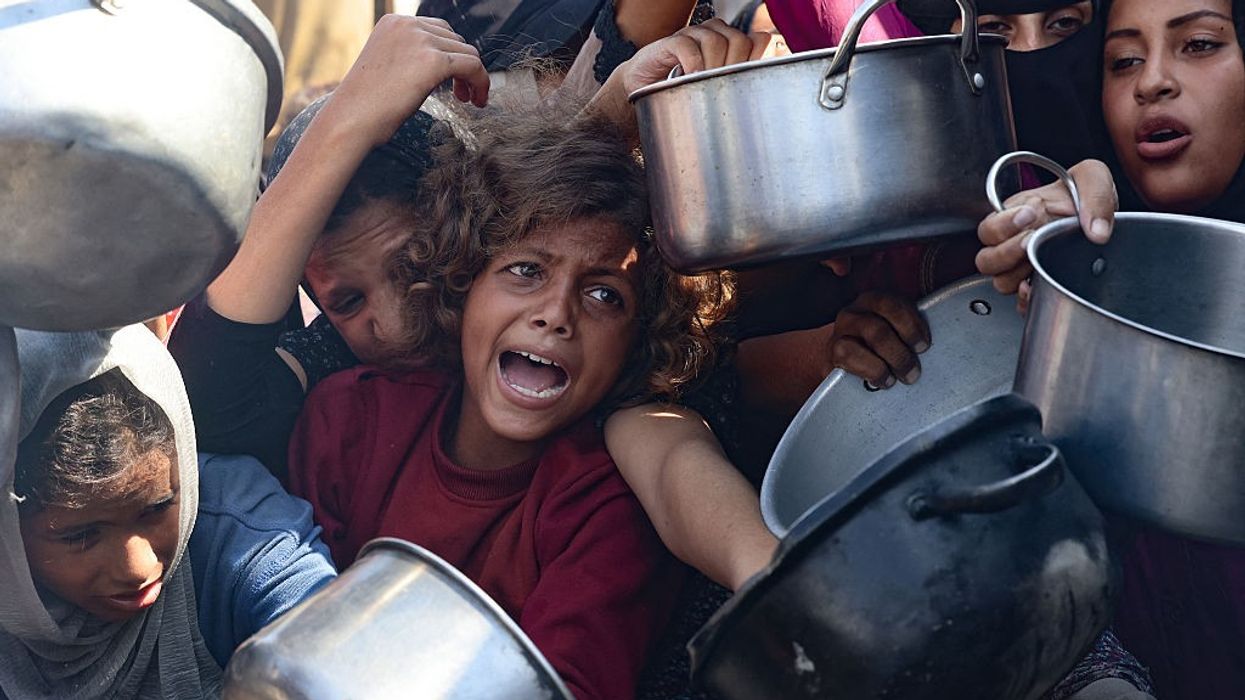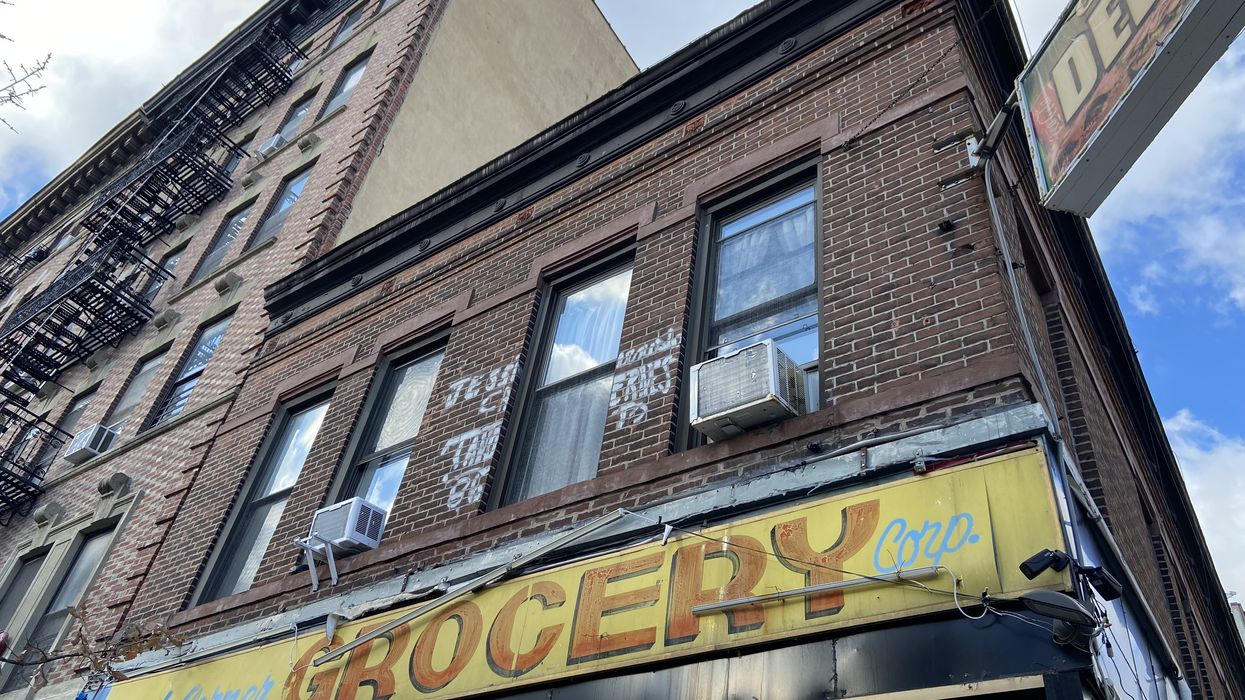We Need Legally Enforceable Rights to Fight Poverty and the Housing Crisis
Ratifying the International Covenant on Economic, Social, and Cultural Rights would end the US’ back-and-forth dance with domestic poverty.
Our law school clinic’s weekly presence in eviction court, where we represent struggling renters, provides us with a front-row seat to a galling tragedy: widespread poverty in the richest nation in the world.
Sometimes, the biggest problem that our clients face is that their rental house or apartment is in unsafe or unhealthy condition, with mold and rodents running rampant and heat that does not work. There is a law to address this problem, and a government program to enforce that law.
Sometimes, the landlord’s ledger is wrong, and our clients made payments that are not accounted for. There is a government process for dealing with that, too.
But more often, our clients’ core problems are that they simply cannot afford the cost of survival. And our government usually has no answers for that.
For example, our client Sandra’s rent swallows well over half of her home healthcare worker salary, and she recently needed to pay for an expensive car repair because that is her only transportation to work. William’s disability check actually totals less than the rent he owes each month. The meals that Rochelle skips have not prevented her lights from being turned off for nonpayment, and she has been unable to afford her blood pressure medication.
Sandra, William, and Rochelle all qualify for government-subsidized housing. But they are among the 3 of every 4 eligible households who don’t receive it due to the programs being so underfunded. They and their families also struggle to get consistent access to food and healthcare.
Like Sandra and Rochelle, most of our clients in eviction court have jobs. But those jobs are in food service, home healthcare, and retail. Those industries, despite being some of the country’s top employers, don’t pay wages high enough for workers to be able to afford life necessities, especially with rents increasing far more quickly than wages.
The suffering we see in eviction court can be traced directly to the lack of enforceable economic rights in the US.
That is why, along with 3.6 million other US households that are sued for eviction every year, Sandra, William, and Rochelle face losing their homes. The Census Bureau says there are 17 million-plus people living in households that are currently behind on their rent. That means the number of Americans living on the verge of eviction equals the total populations of Michigan and Massachusetts combined. Over 43 million Americans live in poverty, a number that aligns with the number of Americans who are living with food insecurity. One in three adults each year skip getting healthcare, including filling prescriptions, because they can’t afford it.
There is no law that addresses this crisis.
Yet.
The United States should fill the gaping hole in our nation’s human rights structure by following the lead of the rest of the world and ratifying the International Covenant on Economic, Social, and Cultural Rights, aka the ICESCR.
ICESCR Will End Our Toxic Anti-Poverty Dance
As Sandra, William, and Rochelle can attest, the United States does not do enough to alleviate poverty. And when we do take positive action, it is routinely scaled back at a later date. We take one step forward; two steps back.
The ICESCR will fix that.
The ICESCR is a global treaty that requires all ratifying nations to fulfill economic rights, including the right to housing, the right to healthcare, and the right to an adequate standard of living. Essentially, the ICESCR protects the human right to survive in a decent and healthy manner. The ICESCR has been in force for nearly 50 years, and has been ratified by virtually every nation in the world, 172 nations in all, including all but one nation in North America or Europe.
That lone holdout is the United States.
The suffering we see in eviction court can be traced directly to the lack of enforceable economic rights in the US. Of course, the US does have some anti-poverty government programs like Supplemental Nutrition Assistance Program (SNAP aka Food Stamps), Temporary Assistance to Needy Families, and subsidized housing. But, as we saw this summer with the passage of the devastating so-called Big, Beautiful Bill, which will strip healthcare and food assistance from millions, the essential needs these programs address are funded at the whim of the current Congress and administration.
This is not a new phenomenon. The historic and lifesaving New Deal social programs of the 1930s and 1940s were slashed during the Reagan era of the early 1980s and then again in the 1990s by the Clinton “end welfare as we know it” legislation. During the first years of the Covid-19 pandemic in 2021 and 2022, we took a significant step forward, expanding social programs that reduced poverty to historic lows. Then, this summer, Republicans in Congress and President Donald Trump lurched backward, pushing through the largest safety net cuts in history.
Someday, domestic political power will shift. When that happens, we will likely restore some of the program cuts. But those gains will merely set the stage for the programs to be scaled back in years to come.
Unless US progressives commit to a post-Trump agenda that includes ratifying the ICESCR. Then, the challenge of meeting basic needs will be transformed from a political and budgetary wrestling match into a question of human rights. The next time basic healthcare and food and shelter are under attack, there will be a legal foundation from which to push back. We will stop this toxic one-step forward, two-steps backward anti-poverty dance, once and for all.
The US Public Wants the ICESCR
The US is often characterized as possessing an individualist, free market-favoring political culture, which cuts against the widespread adoption of the economic rights contained in the ICESCR. Yet many economic rights are already deeply woven into the fabric of US society. Consider the overwhelming popularity of our nation’s Social Security program, and the well-established roots of our nation’s system of free primary and secondary education, which align with the ICESCR Articles 9 and 13.
In addition to the right to education, fully half of state constitutions contain provisions that address welfare, poverty, or public health. A number of states and cities have adopted some version of a Homeless Bill of Rights or similar legal commitments to the right to housing. The rights to clean water and air, sometimes known as “Green Amendments,” are recognized in the state constitutions or statutes of California, Massachusetts, Pennsylvania, Illinois, Hawaii, Montana, and in several municipal ordinances. In 2021, the state of Maine enshrined the right to food in its constitution.
When we take the step to full ratification, the ICESCR will bring a new and much-needed level of national enforceability for the rights that the US public already supports.
Americans are ready to make these rights nationwide and enforceable. Public opinion polls in recent years show strong majorities in support of recognizing and enforcing housing and healthcare as human rights, and insisting that the government should do more to address food insecurity. These views pair with deep popular concern about the US’ wealth inequality and support for raising taxes on the wealthy and corporations. Americans similarly endorse a government jobs guarantee that lines up with the ICESCR Articles 6 and 7.
Given religion’s powerful influence on US culture and values and the commitment to economic justice that is shared among all major religions, the support for economic rights among the US public should not be surprising. When we take the step to full ratification, the ICESCR will bring a new and much-needed level of national enforceability for the rights that the US public already supports.
The ICESCR Has Deep US Roots
Since the first moment of its existence, the US has affirmed the importance of economic rights. The inalienable rights held to be self-evident in the Declaration of Independence include “life” and “the pursuit of happiness,” both of which are obviously unattainable without shelter, food, healthcare, etc.
Founding father Thomas Paine called for the redistribution of land and wealth via progressive taxation, social security-style old-age pensions, support for families with young children, full employment, and a basic income. Alexander Hamilton interpreted the Taxing and Spending Clause in Article I, Section 8 of the US Constitution (“The Congress shall have Power to lay and collect taxes... to provide for the General Welfare of the United States”) broadly enough to fulfill Paine’s vision of a government that meets unmet economic needs. Hamilton’s fellow Constitution framer James Madison stated that the new nation needed laws to “raise extreme indigence toward a state of comfort.”
The US’ most consequential step taking the US toward a comprehensive set of enforceable economic rights was the New Deal of the mid-1930s, which featured social security, unemployment insurance, public housing, and the federal backing of home purchases, along with multiple programs that provided government-paid employment to millions. President Franklin Roosevelt followed up on the New Deal by articulating a historic vision for fully enforceable economic rights for all. In 1944, Roosevelt used the occasion of his annual State of the Union address to call for a “Second Bill of Rights” to supplement the civil and political rights already protected by the US Constitution. Roosevelt outlined multiple distinct economic rights, including living-wage employment, housing, healthcare, and education.
Roosevelt’s declaration served as the blueprint for the post-World War II international human rights structure. That structure’s foundation is the United Nations Charter, the Universal Declaration of Human Rights, and the International Covenants on Civil and Political Rights and Economic, Social, and Cultural Rights, all of which explicitly or implicitly reference Roosevelt’s human rights language.
Regrettably, the post-war US backed away from international recognition of economic rights: In 1977, President Jimmy Carter signed the ICESCR and submitted it to the US Senate for consent to ratification, but the Senate has never acted on it. Still, the domestic legacy of Roosevelt’s economic rights vision lived on. The 1960s’ Great Society and War on Poverty programs of President Lyndon B. Johnson established the Medicare and Medicaid programs, along with Food Stamps, now known as Supplemental Nutrition Assistance Program, SNAP. Those lifesaving programs endure, along with widespread government-imposed price controls on human necessities like rental housing, electricity, water, and healthcare.
We Can Afford the ICESCR
In his book, The Ends of Freedom: Reclaiming America’s Lost Promise of Economic Rights , Rutgers University economist Mark Paul lays out the economic rights that together would create what he calls the “well-being state,” including access to housing, healthcare, and a basic income. Given the outsize power held by wealthy individuals and corporations, Paul does not minimize the political challenge of enshrining these rights in US law. But he is unconcerned about the process of paying for economic rights. “The financing?” Paul asks. “That’s the easy part.”
That may seem glib, but Paul stands on solid ground. “Anything we can actually do, we can afford,” insisted John Maynard Keynes. Other nations’ success at ensuring economic rights have proved Keynes correct, as did the US’ economic boon period in the mid-20th century, a time of deficit spending and marginal income tax rates as high as 90%.
By shifting the conversation on housing, healthcare, and income needs from the language of charity or budgetary choices to that of enforceable rights, advocates will widen the window of political possibility to include full realization of all basic human needs.
Tax policy reform is one of several avenues that Paul and others cite as the source for funding a historic expansion of economic rights in the US. Elected officials like Rep. Alexandria Ocasio-Cortez (D-N.Y.) and Sen. Bernie Sanders (I-Vt.) and economists like Thomas Piketty, Peter Diamond, and Emmanuel Saez have proposed back-to-the-future top marginal tax rates of 70% or more, still lower than the 1950s’ US rate—when we also had significantly higher government spending. As Sanders says, “I’m not much of a socialist compared to Eisenhower.” Or Franklin Roosevelt, for that matter, who proposed a top tax rate of 100%, essentially capping annual income at the equivalent of $500,000 in current dollars.
Economists like Piketty and Nobel Prize laureate Joseph Stiglitz and US politicians like Sen. Elizabeth Warren (D-Mass.) call for significant wealth taxes that would raise billions annually. We can also free up funding to fulfill economic rights by slashing US war spending, which at over $1 trillion annually is more than the next nine countries combined.
Ratifying the ICESCR Will Be Transformative
If the US does ratify the ICESCR, how do we know it will comply with the promises contained in the treaty? That is a legitimate question, since signing off on a covenant does not necessarily translate into compliance with its terms.
But a system of ICESCR-specific accountability exists in the international arena. Robust reporting requirements are placed on ICESCR countries, which means a ratifying United States will be expected to quickly present a plan to achieve full realization of the promised economic rights and then to demonstrate tangible steps toward completion of that plan.
Of course, plans don’t feed or house people. But the ICESCR’s terms and compliance process would provide US anti-poverty advocates with a platform for using the treaty review process and the national legislative systems to enforce its promises. And it adds in the power of the courts. US litigation to enforce the ICESCR would follow existing US precedent, including rulings that reinforced their states’ constitutional rights to education and structural injunctions targeting the need for shelter for unhoused persons, healthcare access, and nutrition benefits.
The prospects are enticing. We caught a glimpse of what could be during the early years of the Covid-19 pandemic, when the US responded to the crisis with Coronavirus Aid, Relief, and Economic Security (CARES) Act stimulus checks, extended unemployment benefits, an expanded child tax credit, rental assistance, maximized food stamps, expanded Medicaid coverage, increased childcare support, and a national eviction moratorium. Economic support programs did the unthinkable: Poverty rates actually dropped to a record low during a pandemic.
By ratifying the ICESCR, we can make those temporary improvements permanent—and then improve on them. The language that became the 14th and 15th Amendments and the Civil Rights Act helped frame the abolitionist and civil rights movements and their goals. ICESCR can do the same for anti-poverty advocacy in the US. By shifting the conversation on housing, healthcare, and income needs from the language of charity or budgetary choices to that of enforceable rights, advocates will widen the window of political possibility to include full realization of all basic human needs.
Those legally enforceable rights would change the lives of our clients Sandra, William, Rochelle, and the millions of others who struggle alongside them.


